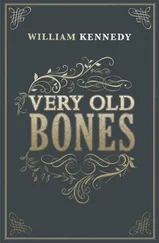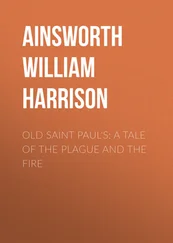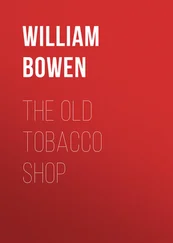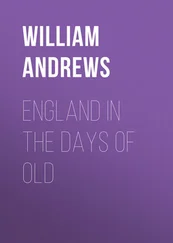William Axon - Echoes of old Lancashire
Здесь есть возможность читать онлайн «William Axon - Echoes of old Lancashire» — ознакомительный отрывок электронной книги совершенно бесплатно, а после прочтения отрывка купить полную версию. В некоторых случаях можно слушать аудио, скачать через торрент в формате fb2 и присутствует краткое содержание. Жанр: foreign_antique, foreign_prose, на английском языке. Описание произведения, (предисловие) а так же отзывы посетителей доступны на портале библиотеки ЛибКат.
- Название:Echoes of old Lancashire
- Автор:
- Жанр:
- Год:неизвестен
- ISBN:нет данных
- Рейтинг книги:3 / 5. Голосов: 1
-
Избранное:Добавить в избранное
- Отзывы:
-
Ваша оценка:
- 60
- 1
- 2
- 3
- 4
- 5
Echoes of old Lancashire: краткое содержание, описание и аннотация
Предлагаем к чтению аннотацию, описание, краткое содержание или предисловие (зависит от того, что написал сам автор книги «Echoes of old Lancashire»). Если вы не нашли необходимую информацию о книге — напишите в комментариях, мы постараемся отыскать её.
Echoes of old Lancashire — читать онлайн ознакомительный отрывок
Ниже представлен текст книги, разбитый по страницам. Система сохранения места последней прочитанной страницы, позволяет с удобством читать онлайн бесплатно книгу «Echoes of old Lancashire», без необходимости каждый раз заново искать на чём Вы остановились. Поставьте закладку, и сможете в любой момент перейти на страницу, на которой закончили чтение.
Интервал:
Закладка:
1879. – Sarah Warburton, who died at Accrington in 1879, was reputed to have been born February 2nd, 1779. At the old folks’ tea-party during the Christmas before her death she received the prize of a new dress-piece for singing a song of her juvenile days!
1881. – The case of the “Crumpsall Centenarian” excited some interest in 1881. She died October 8th, 1881, and was reported to be in the 108th year of her age. Jane Pinkerton, whose maiden name was Fleming, according to the testimony of the entry in a family Bible, in which the names of her brothers and sisters were also entered, was born 16th June, 1774, within a few miles of Paisley, in Scotland. When she was a girl her father took his family to Ireland. She married James Pinkerton, a schoolmaster in the neighbourhood of Belfast, and at his death she came to reside with a married daughter at Lower Crumpsall. She is buried in the Wesleyan Cemetery, Cheetham Hill.
This list is not a complete one, and doubtless many additions, some in quite recent years, might be made to it. The reader will notice that with few exceptions, amongst which is the remarkable case of John Hutton – there is for the most part an entire absence of evidence. The ages stated have evidently been taken down from the statements of the old men and women, with little or no attempt to verify their correctness. It may be useful to cite two cases that were adequately investigated. The case of Miss Mary Billinge, of Liverpool, is instructive as showing the possibilities of error. She was said to have been 112 years old at the time of her death, 20th December, 1863, and a certificate of baptism was obtained which stated the birth of Mary Billinge, daughter of William Billinge and Lydia his wife, on the 24th May, 1751. It was known that she had a brother named William and a sister named Anne, who are buried at Everton. A reference to the registers showed that these were entered as the children of Charles and Margaret Billinge, and a further search revealed the name of Mary, born 6th November, 1772, and therefore only a little over 91 at the time of her death. The certificate relied upon to prove her centenarian age was that of an earlier Mary Billinge.
The other instance is that of Mrs. Martha Gardner, who died at 85, Grove Street, Liverpool, March 10th, 1881, at the age of 104. This will be best given in the words of Mr. W. J. Thoms, who, after the date of her death, says: – “Some two or three years ago Dr. Diamond kindly forwarded to me a photograph, taken shortly after the completion of her hundredth year, by Mr. Ferranti, of Liverpool. I afterwards received from two different sources evidences as to the birth of this very aged lady, whose father, a very eminent Liverpool merchant, has duly recorded in the family Bible the names, dates of birth, and names of godfathers and godmothers of his fourteen children, who were all baptised at home, but whose baptisms are duly entered in the register of baptisms of the Church of St. Peter, Liverpool. Mrs. Gardner having a great objection to being made the subject of newspaper notices or comments, I advisedly refrained from bringing her very exceptional age under the notice of your readers during her lifetime. I may add that she was a cousin of an early and valued contributor to Notes and Queries , the Rev. John Wilson, formerly president of Trinity College, Oxford, and on his death on July 10th, 1873, Mrs. Gardner took out letters of administration to his estate, and her correspondence, she being then in her 97th year, rather astonished the legal gentleman with whom she had to confer on that business.”
What was the First Book Printed in Manchester?
The answer to this question is not so obvious as might at first be expected. There were in the Lancashire of Elizabeth’s days two secret presses. From one there issued a number of Roman Catholic books. This was probably located at Lostock, the seat of the Andertons. The other was the wandering printing-press, which gave birth to the attacks of Martin Marprelate upon the Anglican Episcopate. This was seized by the Earl of Derby in Newton Lane, near Manchester. The printers thus apprehended were examined at Lambeth, 15th February, 1588, when Hodgkins and his assistants, Symms and Tomlyn, confessed that they had printed part of a book entitled, “More Work for the Cooper.” “They had printed thereof about six a quire of one side before they were apprehended.” The chief controller of the press, Waldegrave, escaped. In these poor persecuted printers we must recognise the proto-typographers of Manchester. No trace remains of “More Work for the Cooper.” The sheets that fell into the hands of the authorities do not appear to have been preserved. Putting aside the claims of this anti-prelatical treatise, we have to pass from the sixteenth to the eighteenth century. Many tracts and books by local men, and relating to local affairs, were printed before 1719, but that appears to be the date of the first book printed in Manchester. The title page is here reproduced: – “Mathematical Lectures; being the first and second that were read to the Mathematical Society at Manchester. By the late ingenious Mathematician John Jackson. ‘Who can number the sands of the Sea, the drops of Rain, and the days of Eternity?’ – Eccles. i., 2. ‘He that telleth the number of the Stars and calleth them all by their Names.’ – Psalm cxlvii., 4. Manchester; printed by Roger Adams in the Parsonage, and sold by William Clayton, Bookseller, at the Conduit, 1719.” (Octavo.)
The claims of Jackson’s “Lectures” were stated by the present writer in Notes and Queries (see fourth series, iii., 97, and vii., 64), and in his “Handbook to the Public Libraries of Manchester and Salford.” Some further correspondence appeared in Local Gleanings (vol. i., p. 54), and an extract was given from one of William Ford’s catalogues, which, if accurate, would show that there was a local press at work in 1664. Ford has catalogued a book in this fashion: – “A Guide to Heaven from the Word; Good Counsel how to close savingly with Christ; Serious Questions for Morning and Evening; Rules for the due observance of the Lord’s Day. Manchester, printed at Smithy Door, 1664. 32mo.”
Apparently nothing could be clearer or less open to doubt. After a careful look out for the book, a copy has been secured, and is now in the Manchester Free Library. The title reads: – “A Guide to Heaven from the Word. Good counsel how to close savingly with Christ. Serious Questions for Morning and Evening; and rules for the due observation of the Lord’s Day. John 5, 39. Search the Scriptures. Manchester: Printed by T. Harper, Smithy Door.” (32 mo, pp. 100.) There is no date, but the name of Thomas Harper, printer, Smithy Door, may be read in the “Manchester Directory” for 1788, and the slightest examination of the “Guide to Heaven” will show that its typography belongs to that period. From whence, then, did Ford get the date of 1664? If we turn to the fly-leaf the mystery is explained, for on it we read, “Imprimatur, J. Hall, R.P.D. Lond. a Sac. Domest. April 14 1664.” The book, in fact, was first printed in London in 1664, and Thomas Harper, when issuing it afresh, reprinted the original imprimatur, which Ford then misconstrued into the date of the Manchester edition. The book is entered as Bamfield’s “Guide to Heaven” in Clavell’s “Catalogue,” and the publisher is there stated to be H. Brome. Either Francis or Thomas Bamfield may have been the author, but the former seems the more likely. Thomas Bampfield – so the name is usually spelled – was Speaker of Richard Cromwell’s Parliament of 1658, and he was a member of the Convention Parliament of 1660, and was the author of some treatises in the Sabbatarian controversy. Francis was a brother of Thomas, and also of Sir John Bamfield, and was educated at Wadham College, Oxford, where he graduated M.A. in 1638. He was ordained, but was ejected from the Church in 1662, and died minister of the Sabbatarian Church in Pinner’s Hall. He wrote in favour of the observation of the Saturday as the seventh day, and therefore real Sabbath, and whilst preaching to his congregation was arrested and imprisoned at Newgate, where he died 16th February, 1683-4. His earliest acknowledged writing was published in 1672, and relates to the Sabbath question.
Читать дальшеИнтервал:
Закладка:
Похожие книги на «Echoes of old Lancashire»
Представляем Вашему вниманию похожие книги на «Echoes of old Lancashire» списком для выбора. Мы отобрали схожую по названию и смыслу литературу в надежде предоставить читателям больше вариантов отыскать новые, интересные, ещё непрочитанные произведения.
Обсуждение, отзывы о книге «Echoes of old Lancashire» и просто собственные мнения читателей. Оставьте ваши комментарии, напишите, что Вы думаете о произведении, его смысле или главных героях. Укажите что конкретно понравилось, а что нет, и почему Вы так считаете.












